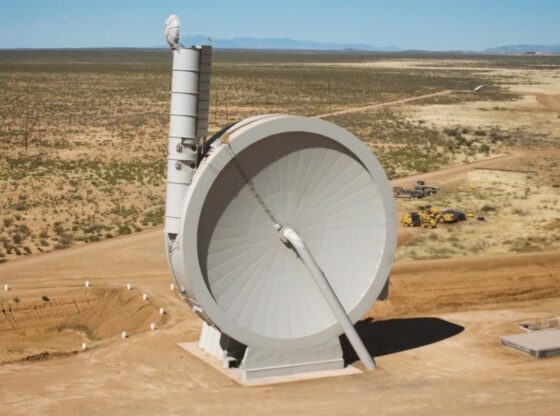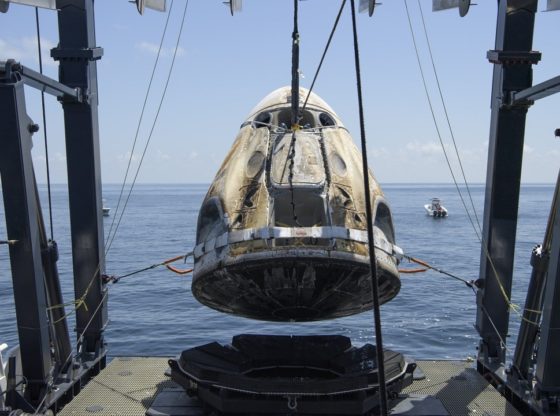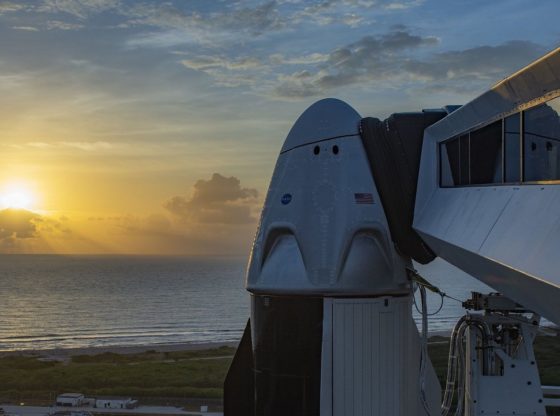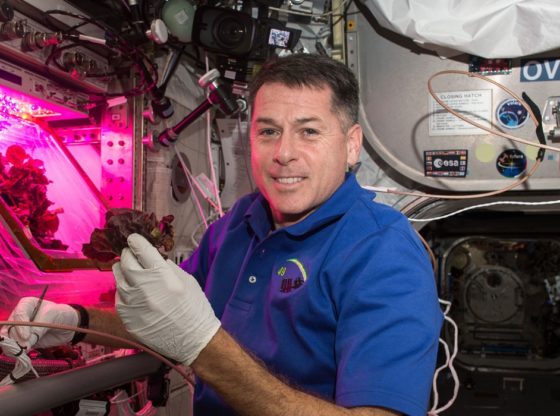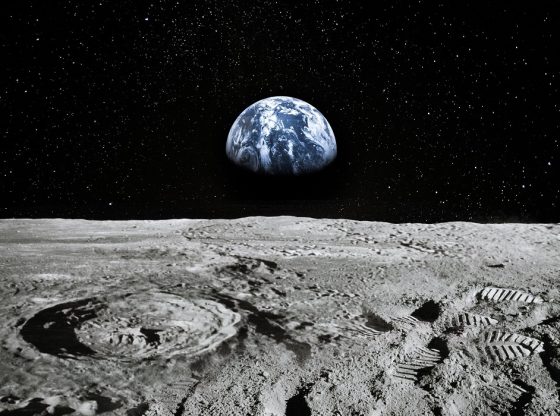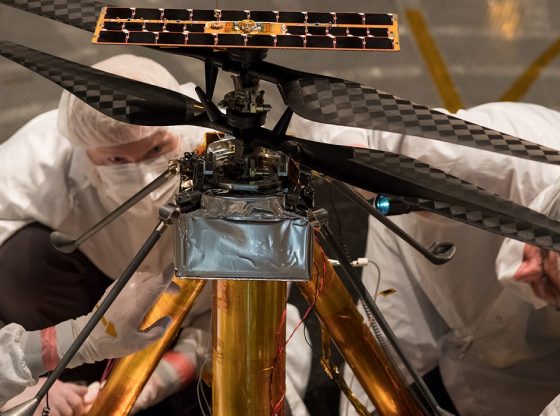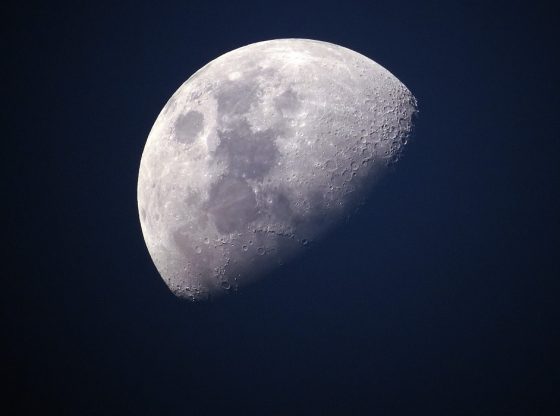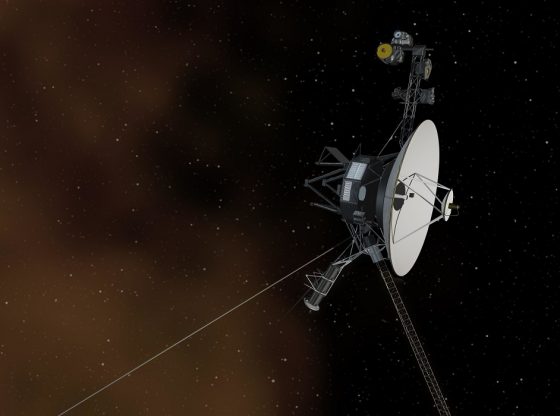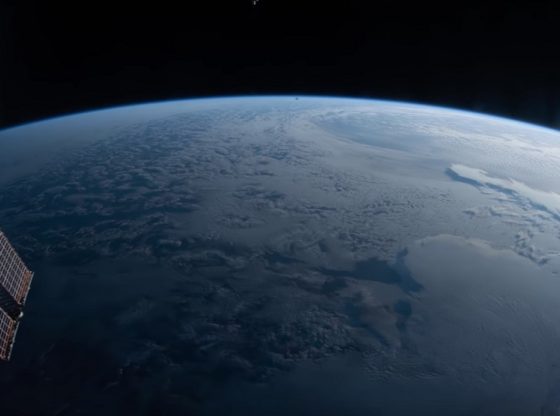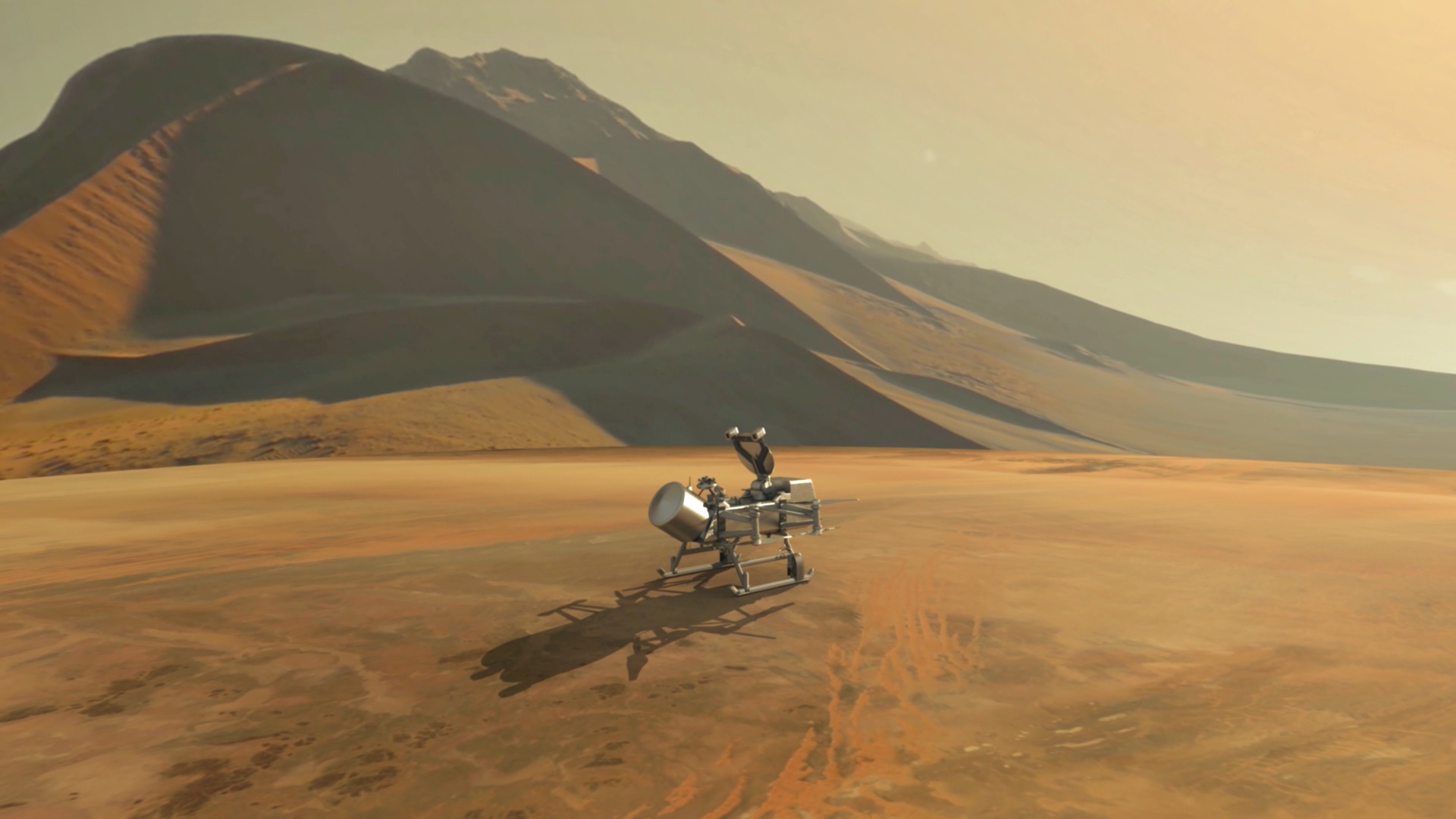
Temperatures of around minus 180 and seas of liquid methane do not deter Nasa. In pursuit of life’s building blocks, the US Space Agency plans to send a flying robot to Saturns moon Titan.
Titan is the second-largest moon of the solar system, beaten only by Jupiter’s moon Ganymede. Its dense atmosphere, as well as seas and lakes, may seem attractive on first glance, it may, however, sound less cozy knowing that all visible lakes and seas consist of liquid methane and that the temperature is holding steady around minus 180 degrees Celsius.
The proposed flying NASA robot for a mission to Titan is named Dragonfly and will be able to land on the moon with the help of eight rotors. The advantage of a flying probe is that it will be able to cover vast distances, it will be able to fly and land at locations far apart due to the unique dense atmosphere on Titan.
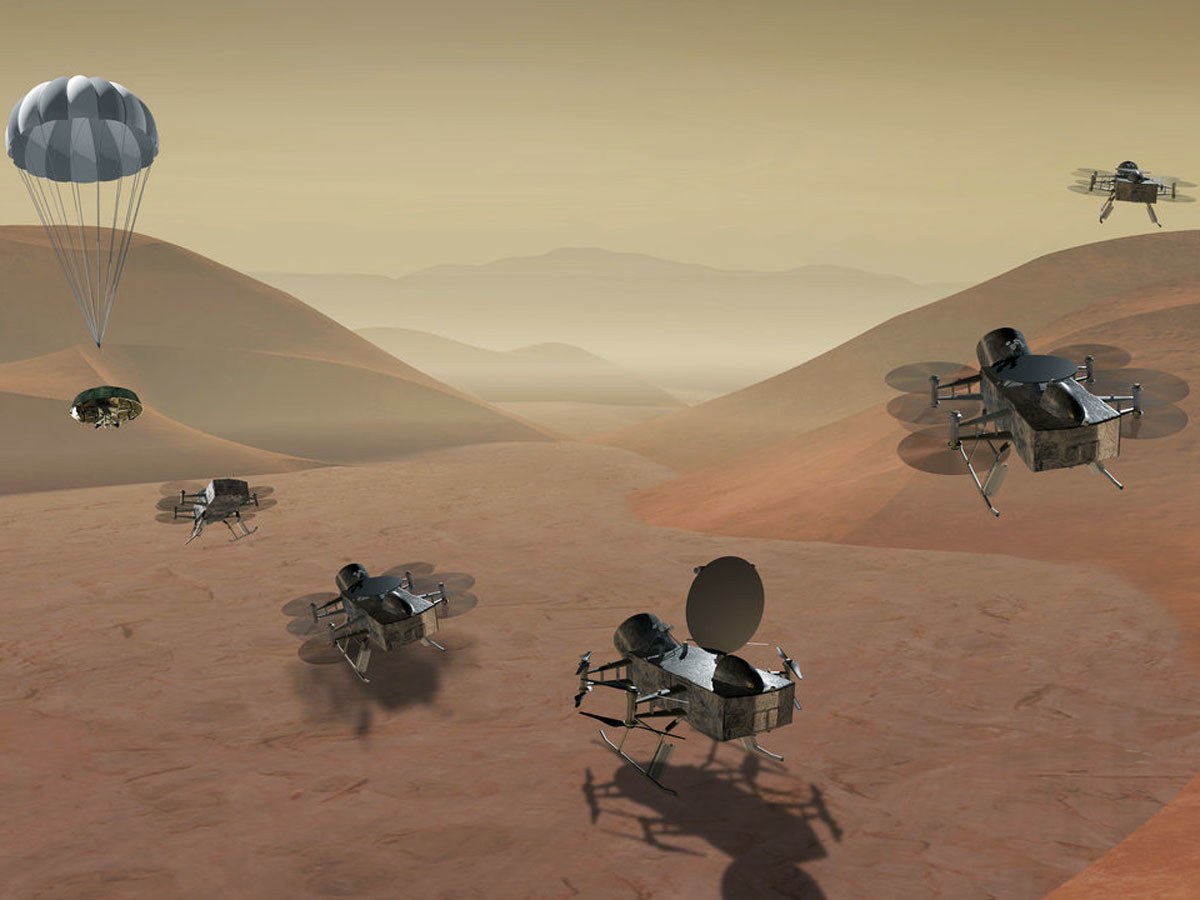
The US space agency compares Titan to that of Earth at a very early stage in its development and hopes to find clues to how life could arise here. In addition to all the methane, there may be water on Titan, but in that case, it is probably hidden under the frozen surface, according to the researchers.
“Visiting this mysterious sea world can revolutionize our knowledge of life in the universe. This groundbreaking mission was unthinkable just a few years ago,”
– According to Nasa chief Jim Bridenstine, in a press release.
Titan is of great interest to astrobiologists in particular because of its thick nitrogen- and methane-rich atmosphere provides the necessary ingredients for creating the complex organic molecules called tholins that, when exposed to water on Titan’s surface, may yield amino acids—the building blocks of life.
For these reasons, not only is Titan a leading candidate for finding extraterrestrial microbial life in its subsurface ocean, but it may also help us better understand how life arose on Earth.
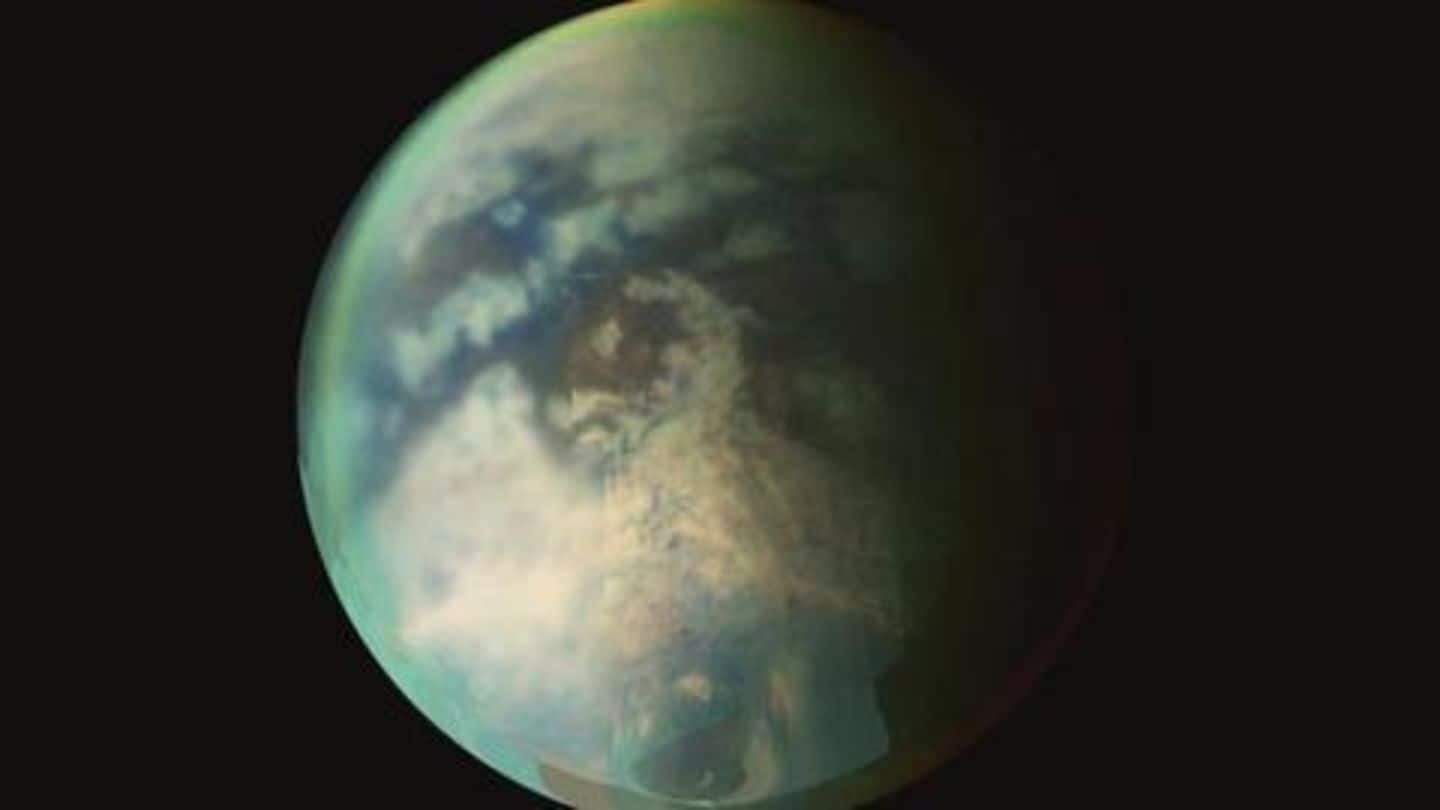
During its approximately two-year mission, Dragonfly will study the moon’s atmospheric and geologic composition, survey the landscape, and probe for conditions and chemicals relevant to biological processes.
The world got its first look at Titan’s surface in the 1990s with the infrared sensors on the Hubble Space Telescope, but it wasn’t until the Huygens probe landed on the moon’s surface in 2005 that scientists could say with much certainty what conditions on Titan were like. Dragonfly is scheduled to launch in 2025 and will land on Titan in 2034.

